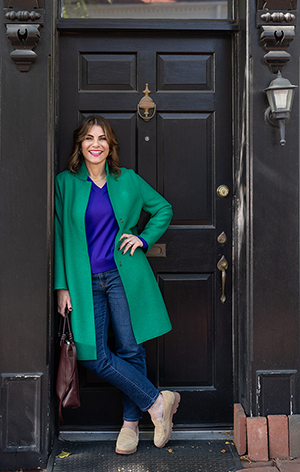 Navy Yard/Capitol Riverfront: After a Rain Delay, the Stadium's Boomtown Starts to Deliver
Navy Yard/Capitol Riverfront: After a Rain Delay, the Stadium's Boomtown Starts to Deliver
✉️ Want to forward this article? Click here.
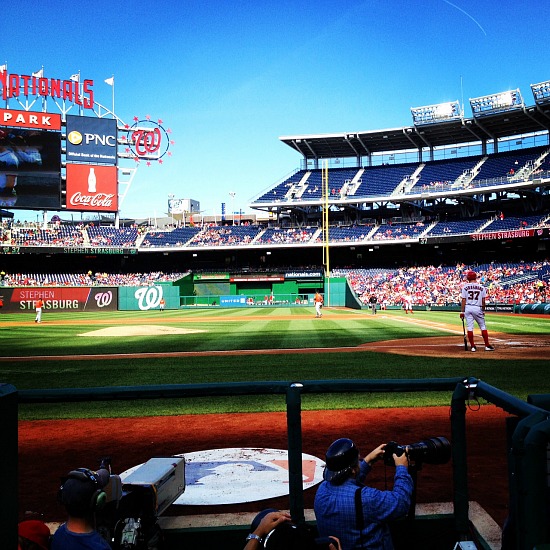
A weekday afternoon Nats game.
Over the past five years, UrbanTurf has profiled more than 50 neighborhoods in the DC area. Starting this week, we are revisiting each of those neighborhoods to update our profiles and see how they’ve changed over the years.
On a recent Friday afternoon, Capitol Riverfront is bustling. U.S. Department of Transportation employees line up at food trucks that surround Canal Park, office workers fill the patio seating at Bluejacket Brewery, and residents don their spandex for a lunchtime yoga class at Yards Park.
The scene is quite different from a few years ago, when the Southeast DC neighborhood had a fraction of its current daytime population of 32,000. Now, Capitol Riverfront is seeing long-planned projects come to fruition, parks, restaurants and retailers are drawing visitors from across the city, and the streets no longer resemble a ghost town.
Between a River and the Capitol
Capitol Riverfront refers to 500-acre area roughly bounded by South Capitol Street, the Anacostia River and the Southeast Freeway.
The name Capitol Riverfront emerged from the Capitol Riverfront Business Improvement District (BID) as the neighborhood was beginning to take shape in 2007, and the moniker stuck for business purposes. However, the growing population of residents seem to be choosing their own name. Many refer to it as Navy Yard, others place it “by the ballpark,” but relatively few use the BID-dubbed name. (UrbanTurf reported on the name debate here.)
A Stadium Leads to a Boom
During his tenure, Mayor Anthony Williams made a few decisions that led to the transformation of the area from a quiet industrial center into a manufactured neighborhood: in 2003, Williams launched the Anacostia Waterfront Initiative, charging the city to revitalize the Anacostia riverfront, and in 2004, he signed a bill funding the construction of Nationals Park.
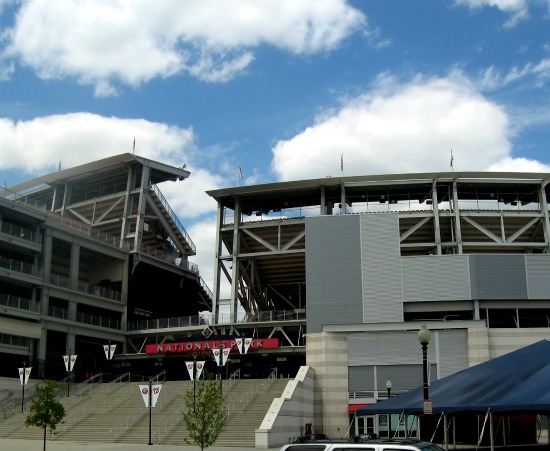
Nationals Stadium
While the surrounding parcels of land were quickly snapped up by developers, the economic downturn put construction on hold for several years, and the area remained quiet. The baseball stadium opened in 2008, but fans tended not to linger in the neighborhood after the game ended. Yards Park was completed at the riverside in 2010, but park visitors often found themselves alone on the boardwalk.
When the economy turned around, cranes and wrecking balls rose up around the neighborhood. Now, according to the BID, there are eight apartment buildings built and leasing in the area. Four broke ground in 2013 and are under construction, and four more are expected to in 2014.
Packed Luxury Apartments, But Few Homes to Buy
Since 2010, Capitol Riverfront has increased its population from 2,781 to a current 4,100. By next year, the population is expected to reach 5,000. While those population numbers may seem paltry, consider that there are just about 2,760 residential units in the neighborhood right now.
The market is dominated by rental buildings. The newest one to come online is the 218-unit Twelve12, located at 1212 4th Street SE. Aimed at well-heeled millennials, the studios are going for $1,900 per month, and the largest two-bedrooms will rent in the $4,000 per month range. The 287-unit River Parc, at 1st and K Streets SE, will be the next to deliver this year, and the 433-unit Park Chelsea, at 880 New Jersey Avenue SE, will be completed in 2015.

Foundry Lofts
The high rents reflect current demand, but the coming wave of new apartments in the neighborhood and rest of the city will likely change the market in the near future.
Grant Montgomery, Senior Vice President of research firm Delta Associates, estimates that rents in the region will decline by 5 percent in the coming year and 2-3 percent the next. Capitol Riverfront is already seeing rents decline. Rents fell 2.6 percent in the neighborhood over the last twelve months, compared to 0.2 percent in the District as a whole.
Vacancy is also slightly higher than in the rest of the city: Montgomery notes that the vacancy rate in the neighborhood is 5.7 percent, compared to 4.8 percent in the rest of DC.
“It’s going to be very difficult to push rents upwards when you have as many units delivering as you have here,” Montgomery told UrbanTurf.
While the rental market is getting saturated, for-sale opportunities are few and far between.
“There are people who are desperate for condos,” revealed David Garber, a four-year resident and ANC commissioner in the area. “They feel invested here, love being next to the river and like what’s going on, but there are no options to buy.”
The DC’s scant condo market is magnified in Capitol Riverfront. The last new construction condo project, Velocity Condos, sold out last July. The massive townhouse project known as Capitol Quarter encompasses over 300 homes, but it has long been sold out.
The word is that a few developers are eying spots to put up boutique buildings. EYA is rumored to be considering a condo project across from Canal Park, and Garber hints at another project that is in the early planning stages.

Yards Park
42 Lively Acres in the Neighborhood
In 2004, developer Forest City was awarded the right to develop a plot in Capitol Riverfront through a public-private partnership with the city and the General Services Administration (GSA). The result is The Yards, a 42-acre development project that includes Yards Park, The Boilermaker Shops, The Lumber Shed, several apartment buildings and other yet-to-be developed parcels.
Following years of a stalled work schedule, Forest City completed Foundry Lofts, a 170-unit apartment project set in a former Navy building, in 2011. One of the first apartments to launch after the downturn, Foundry Lofts helped rebuild the buzz in the area and set the development ball rolling again.
Yards Park, with bridges, a tiered lawn, a verdant strolling area, a splash park, and a wide boardwalk, serves as a canvas for place-making, and the BID has been quick to “program” the space with a Friday night concert series and free fitness classes.
The Yard’s Parcel N, across Tingey Street SE from the Boilermaker Shops, a retail space that spans the 300 block of the street, is currently under construction and will be home to a 325-unit apartment building, designed by Brooklyn-based architect Robert Stern. To the east of Boilermaker, across 4th Street, sits Twelve12, which will be anchored by a Harris Teeter and VIDA Fitness.

The Yard’s Parcel N, designed by architect Robert Stern.
20 Restaurants, But Other Options Needed
“Bluejacket Brewery changed everything,” said Garber. “It’s the first business outside of the baseball stadium that has drawn a really large audience from the rest of the city.”
On game days, the craft brewery, which anchors the Boilermaker Shops, is packed. The bar is standing-room only, and the patio is edged by a grill master serving hot dogs to supplement the pricier kitchen items. Boilermaker is also leasing to several other eateries, like Nando’s Peri-Peri, Buzz Bakery, 100 Montaditos and Willie’s Brew and Que.

Bluejacket at the Boilermaker shops
More food options can be found at the Lumber Shed in Yards Park, like the upscale Osteria Morini, Agua 301, and Sushi and Ice Cream Jubilee.
These new destinations bring the total number of dining options in the neighborhood up to 20, and more are on the way. Though the BID told UrbanTurf that the market still has a need for more eateries, some developers are concerned about restaurant fatigue and are starting to look beyond satisfying hunger.
For example, last fall, Forest City announced plans to anchor their next residential project, just east of the ballpark, with a 16-screen high-end movie theater. Many of the coming apartment buildings will have retail space on the ground level, and both residents and analysts are hoping that developers think beyond the norm when choosing tenants.
“It would be nice to have a variety of small local businesses open in the area like clothing and shoe boutiques rather than big name retailers,” said Zaira Suarez, who moved to the area two years ago.

Bluejacket on opening day. Courtesy Bluejacket Brewery.
Heather Arnold, director of research and analysis at StreetSense, took Suarez’s thinking a step further.
“We need to stop thinking about ground level space in Capitol Riverfront as just for retail,” she said.
Arnold’s thinking is dictated by the realistic possibility that the build-out of the neighborhood will provide more space than can serve the area. At the BID’s sixth anniversary in January, Arnold noted that supply could be outstripping retail demand by a few hundred thousand square feet in 2018. Hence, a recommendation to make the uses for retail space in the neighborhood more flexible.
“There are a lot of alternatives to fill retail space,” Arnold noted, indicating that educational and government uses are possibilities, as are museums and child care centers. “In order for the area not to run into an over-supply issue, the plans for these spaces should be flexible.”
One Day in September
The Navy Yard received national attention last fall when a subcontractor passed through security to enter the Yard on the morning of September 16th, and proceeded to shoot and kill 12 people before being killed by the police. The shooting led to hours of chaos and confusion within the neighborhood as the police attempted to apprehend the shooter and understand the situation.
“That afternoon, we received e-mails from our building concierge letting us know all our buildings would be locked until further notice,” remembers Zaira Suarez. “Some friends waited for days to hear from their co-workers, since they had been asked to run if they had not yet entered the Yard.”
The shooting reverberated through the community. Suarez noted that three close friends and neighbors resigned from their positions at the Navy Yard and moved out of the area after years of working and living there. However, any lingering feelings regarding safety in the area are the result of the area’s past reputation.
“There is still a perception of the area as unsafe, but that comes from the way the neighborhood was a few years ago, not the Navy Yard shooting,” Suarez said.
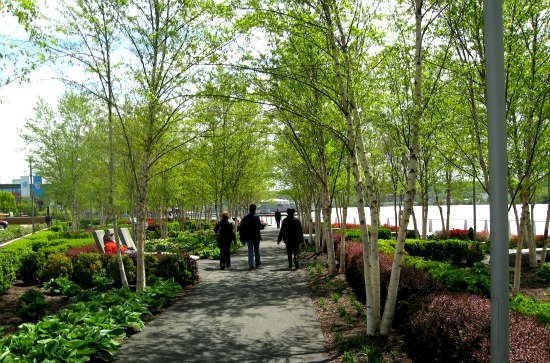
Yards Park
Another Stadium on the Way?
Besides the riverfront, the northern portion of the neighborhood, closer to the freeway, is also starting to develop.
In April, CBS Radio announced that they signed a 15-year lease to relocate from Maryland to 1015 Half Street SE. The station will be activating the street front with a “Today Show-style” studio facing L Street SE, and hopes to create a performance space as well. Construction is estimated for completion by the end of 2014. A few blocks away, Whole Foods will start construction on a market at 800 New Jersey Avenue SE on June 1st, and near that, a Harris Teeter will deliver in October.
Finally, one of the long-term projects in the works concerns one of the least-utilized views in DC: Buzzard Point. The area boasts a rare view of the point where the Potomac and Anacostia Rivers converge, but is currently an industrial waste land that is home to a scrap metal yard, parking lots, and a rusty old Pepco plant.
DC United is currently in talks to open up a new stadium at 2nd Street and T Streets SW, and the deluge of soccer fans would no doubt lead to a revitalization of the Point. Along with the stadium, plans would call for revamped pedestrian areas and easier-to-navigate streets.
The Bottom Line
Unlike many so-called developing neighborhoods in DC, which involve renovating existing rowhouses and replacing one population with another, Capitol Riverfront is developing in a truer sense of the word: residences are emerging where there were none, and a new population is filling the space.
Though much of the area still feels like a construction zone, enough projects have been completed to convey a sense of the new neighborhood’s personality.
Because it is full of DC’s take on a high-rise, Capitol Riverfront has a more urban feel, architecturally, than much of the city. New, glassy apartment buildings sit amidst repurposed industrial ones. Amenities tend to serve more than the scant population: the ballpark and the riverfront draw sports fans and outdoorsy folk, and Yards Park and Canal Park took their cues from the National Mall with a Friday night concert series and an ice skating rink.
As more projects come to fruition and space becomes more plentiful, time will tell if the demand is there to meet the growing supply.
See other articles related to: capitol riverfront, hoods, navy yard, the yards, yards park
This article originally published at https://dc.urbanturf.com/articles/blog/navy_yard_cap_riverfront_after_a_rain_delay_the_boomtown_starts_to_deliver/8442.
Most Popular... This Week • Last 30 Days • Ever

Title insurance is a form of insurance that protects against financial loss from defe... read »

Plans are to transform a vacant office building into a mixed-use residential communit... read »

In news that will make homebuyers and sellers alike happy, mortgage rates dropped to ... read »

Why the U.S. stopped building starter homes; a step ahead for a large office conversi... read »
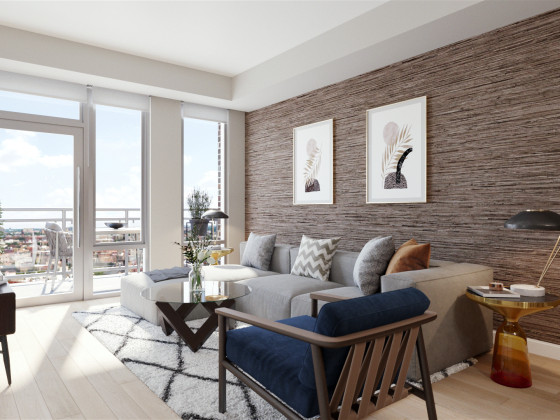
The DC region closed out 2025 with four consecutive months of declining rents, with m... read »
DC Real Estate Guides
Short guides to navigating the DC-area real estate market
We've collected all our helpful guides for buying, selling and renting in and around Washington, DC in one place. Start browsing below!
First-Timer Primers
Intro guides for first-time home buyers
Unique Spaces
Awesome and unusual real estate from across the DC Metro

